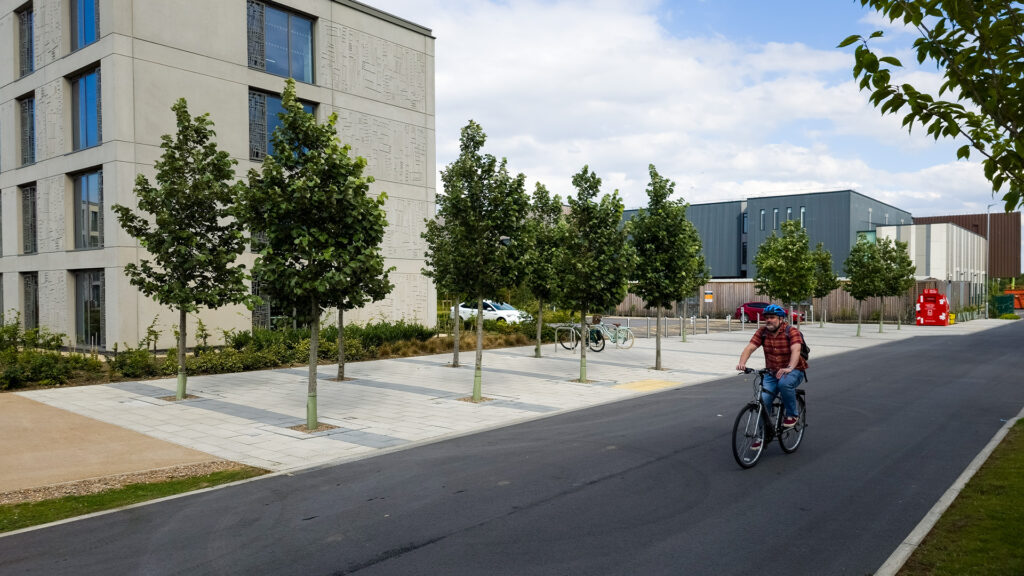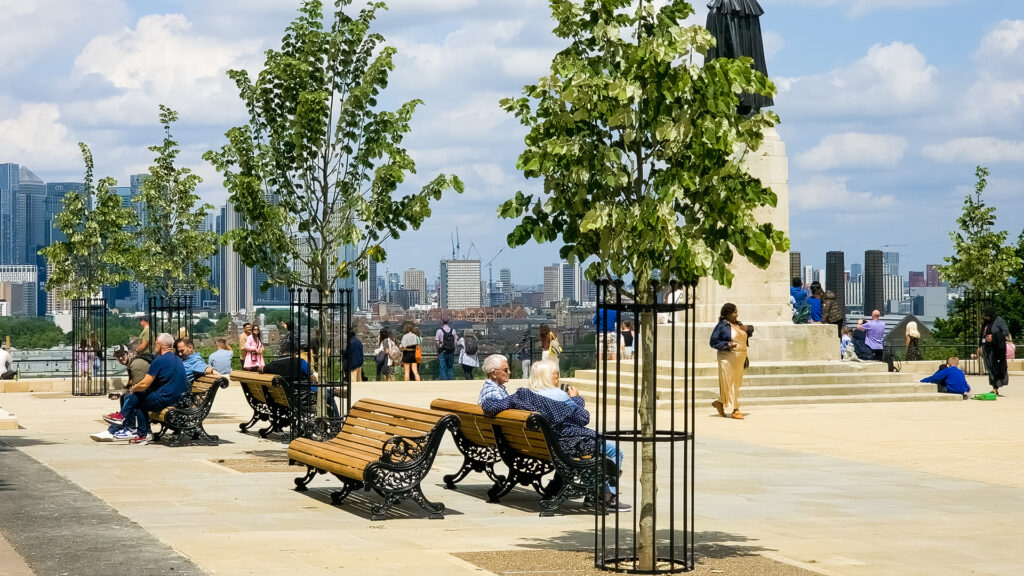The River Lee has been a significant transport artery in the east of London for at least a thousand years – bronze age artefacts have been discovered along its route and the Romans had to cross it as they travelled from London to Colchester at a shallow point, known then, as “Old Ford”.
The most eastern major tributary to the River Thames, it was made fully navigable by canalising the main waterway, now known as the Lee Navigation Canal) by Act of Parliament in 1425, and was used intensively until the 1930s for transportation of goods from the Port of London as far as Hertford and Bishops Stortford.
As with most navigable waterways, the banks were lined with wharves, and the warehouses and factories used the raw materials brought by boat: Lee Navigation is no different. All the way from the Thames at Leamouth (latterly from Limehouse after a new cut had been created, saving many miles of meandering river) businesses took advantage of the opportunities of the river to transport both the raw materials and the finished goods. Once the railway arrived at Tottenham Hale, this hugely increased the value of the riverfront sites, as transport could now be by boat, train or by road.
Project
Location
Contractor
Landscape Architect
The River Lee has been a significant transport artery in the east of London for at least a thousand years – bronze age artefacts have been discovered along its route and the Romans had to cross it as they travelled from London to Colchester at a shallow point, known then, as “Old Ford”.
The most eastern major tributary to the River Thames, it was made fully navigable by canalising the main waterway, now known as the Lee Navigation Canal) by Act of Parliament in 1425, and was used intensively until the 1930s for transportation of goods from the Port of London as far as Hertford and Bishops Stortford.
As with most navigable waterways, the banks were lined with wharves, and the warehouses and factories used the raw materials brought by boat: Lee Navigation is no different. All the way from the Thames at Leamouth (latterly from Limehouse after a new cut had been created, saving many miles of meandering river) businesses took advantage of the opportunities of the river to transport both the raw materials and the finished goods. Once the railway arrived at Tottenham Hale, this hugely increased the value of the riverfront sites, as transport could now be by boat, train or by road.
Project
Location
Contractor
Landscape Architect
Project
Location
Contractor
Landscape Architect
The ”Hale” was really only a hamlet until the coming of the railway; surrounded by fields and marshland, the whole area was involved in supplying the city with produce, including milled grain for bread – the mills being water powered from the river at various points.
The island known as Hale Wharf is surrounded by water – on the west side, the Lee Navigation Canal, and on the east side by the River Lea overflow channel – the original route of the river. This area, on both sides of the water, was used extensively for timber manufacture, including furniture, and joinery, and during the wars of the 20th Century, for manufacturing aircraft and other military goods from wood. This site, easily accessible from the Rotherhithe docks on the south of the Thames, meant that timber from afar could be quickly brought into the workshops, minimising delays.
The ”Hale” was really only a hamlet until the coming of the railway; surrounded by fields and marshland, the whole area was involved in supplying the city with produce, including milled grain for bread – the mills being water powered from the river at various points.
The island known as Hale Wharf is surrounded by water – on the west side, the Lee Navigation Canal, and on the east side by the River Lea overflow channel – the original route of the river. This area, on both sides of the water, was used extensively for timber manufacture, including furniture, and joinery, and during the wars of the 20th Century, for manufacturing aircraft and other military goods from wood. This site, easily accessible from the Rotherhithe docks on the south of the Thames, meant that timber from afar could be quickly brought into the workshops, minimising delays.
After the war, as manufacturing moved away from these areas, large tracts of land were left vacant, designated for new residential zones. Many old warehouses and light industrial units were surpluses to requirements, and plans were produced by the Greater London Council and the London Borough of Haringey to utilise this space for quality housing. The Hale Village development was built on the west of the Lee Navigation, and then plans were proposed for residential blocks on Hale Wharf itself. Working with the local authority, the developers’ Muse Developments and the land owners, the Canal and Rivers Trust instructed Allies and Morrison as lead architects to create a sustainable and pleasant scheme to make full use of the unique setting. Working with Landscape Projects, the Landscape Architects, an attractive design was accepted, which included opening up the river frontage to the public, a new pedestrian bridge giving east-west access and a high-quality tree planting scheme. The area between the properties and the canal was designated public space, with Silver Birch trees planted in GreenBlue Urban tree planting solutions, by J Reddington Ltd, including the RootSpace soil cell, the innovative and world-leading load-bearing pavement support unit, protecting the soil and giving optimal soil quality for the establishment of the trees, complete with the RootRain ArborVent 150 aeration inlet which ensures gaseous exchange to maintain soil health. The visually attractive Zeta tree grille, the only virtually invisible tree grille in the world completes the installation, with nothing to disrupt the view across the water. The trees will become home to a wide variety of birds, many of which can be heard from the site.
On a summer day, the water is busy, with vessels of all types and sizes using or waiting to use the Tottenham lock, and the development and its surroundings support a wide range of biodiversity – from swans to snails, otters to water voles. The 8-acre Paddock Community Nature Park behind the site is home to many different life forms and is planned to be part of an interconnected green network of spaces within the area for rest and relaxation.
From industrial grey to bio-diverse green, GreenBlue urban is transforming spaces into sustainable places – all in harmony with nature.
After the war, as manufacturing moved away from these areas, large tracts of land were left vacant, designated for new residential zones. Many old warehouses and light industrial units were surpluses to requirements, and plans were produced by the Greater London Council and the London Borough of Haringey to utilise this space for quality housing. The Hale Village development was built on the west of the Lee Navigation, and then plans were proposed for residential blocks on Hale Wharf itself. Working with the local authority, the developers’ Muse Developments and the land owners, the Canal and Rivers Trust instructed Allies and Morrison as lead architects to create a sustainable and pleasant scheme to make full use of the unique setting. Working with Landscape Projects, the Landscape Architects, an attractive design was accepted, which included opening up the river frontage to the public, a new pedestrian bridge giving east-west access and a high-quality tree planting scheme. The area between the properties and the canal was designated public space, with Silver Birch trees planted in GreenBlue Urban tree planting solutions, by J Reddington Ltd, including the RootSpace soil cell, the innovative and world-leading load-bearing pavement support unit, protecting the soil and giving optimal soil quality for the establishment of the trees, complete with the RootRain ArborVent 150 aeration inlet which ensures gaseous exchange to maintain soil health. The visually attractive Zeta tree grille, the only virtually invisible tree grille in the world completes the installation, with nothing to disrupt the view across the water. The trees will become home to a wide variety of birds, many of which can be heard from the site.
On a summer day, the water is busy, with vessels of all types and sizes using or waiting to use the Tottenham lock, and the development and its surroundings support a wide range of biodiversity – from swans to snails, otters to water voles. The 8-acre Paddock Community Nature Park behind the site is home to many different life forms and is planned to be part of an interconnected green network of spaces within the area for rest and relaxation.
From industrial grey to bio-diverse green, GreenBlue urban is transforming spaces into sustainable places – all in harmony with nature.





